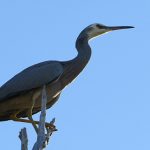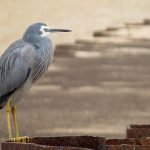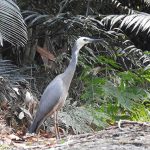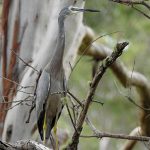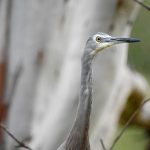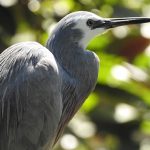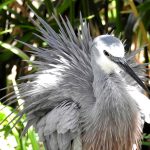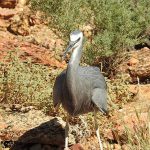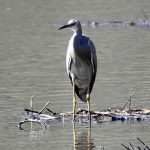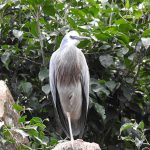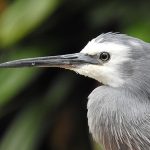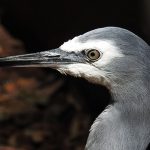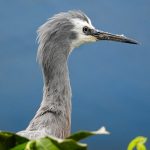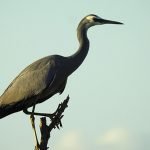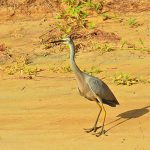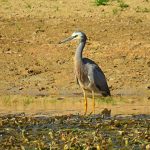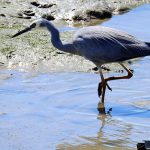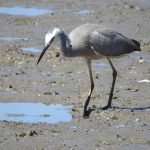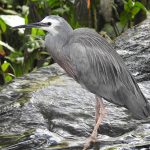WHITE-FACED HERON
The white-faced heron is a common and widespread bird species in Australia. It is found throughout most of the continent, including coastal areas, wetlands, estuaries, and inland habitats.
These herons are medium-sized, measuring about 65-67 cm in length. They are mostly grey with a white face, throat, and neck. During the breeding season, they may develop long plumes on their back.
The most common call of the White-faced heron is a gravelly croak or gobble,[3] graak or graaw and is typically given in flight, in interactions or in aggressive encounters.
White-faced herons are skilled hunters and feed on a varied diet, including fish, frogs, insects, crustaceans, and small mammals. They are often seen wading in shallow water, patiently stalking their prey before striking with a rapid jab of their sharp bills.
While some White-faced heron populations in Australia are sedentary, others are migratory. They may move to different areas within the country in response to changes in water levels and food availability.
White-faced herons are highly adaptable and can be found in a wide range of habitats, including urban areas, parks, gardens, and farmland. Their ability to thrive in various environments has contributed to their widespread distribution.
During the breeding season, White-faced herons build stick nests in trees, often near water sources. They may nest individually or in loose colonies. Both parents share incubation duties and care for the chicks.
White-faced herons belong to the family Ardeidae, which includes other heron species found in Australia. They are often confused with other similar-looking herons, such as the little egret, but can be distinguished by their white face.
These herons have adapted well to urban environments, and it’s not uncommon to spot them in city parks, ponds, and gardens. They can become accustomed to human presence and may be seen foraging near people.
White-faced herons, like many waterbirds, can be affected by habitat degradation and pollution. Protection of wetlands and water quality are crucial to maintaining healthy populations of these birds.
Observing White-faced herons in the wild can be a rewarding experience for birdwatchers, especially due to their graceful hunting behaviors and adaptability to various landscapes in Australia.

